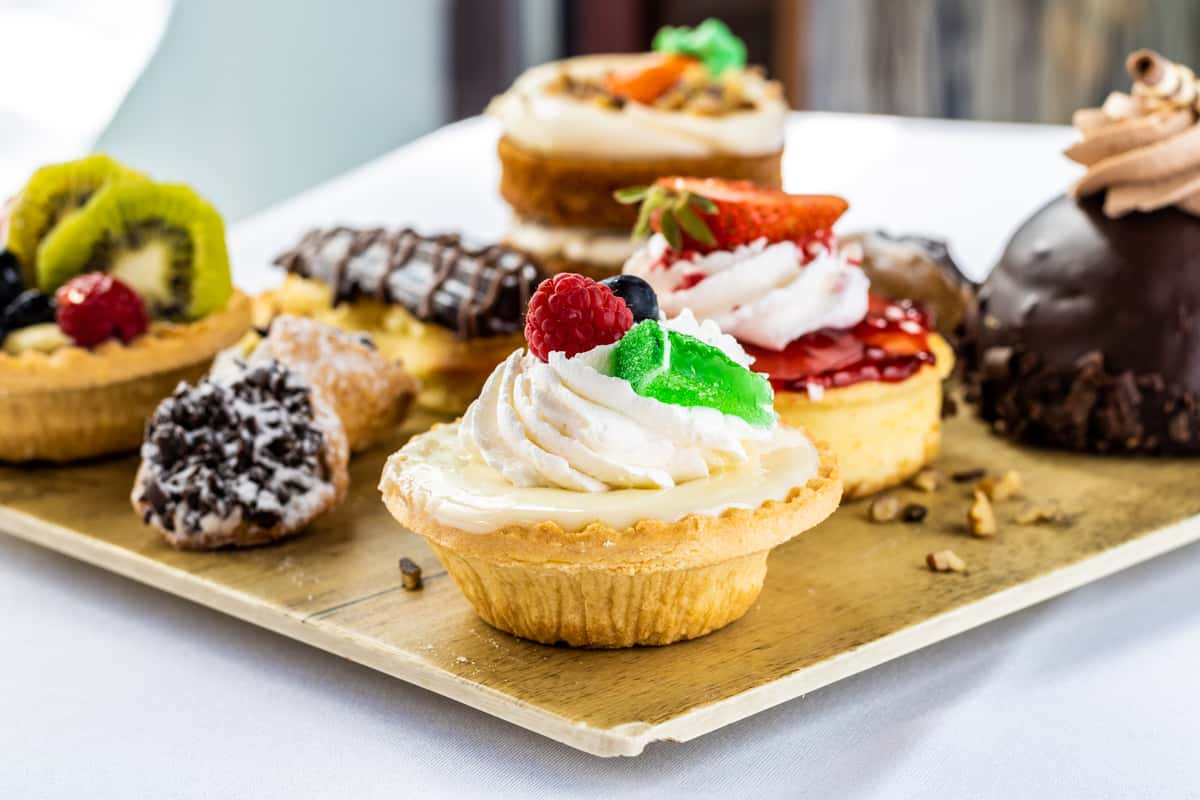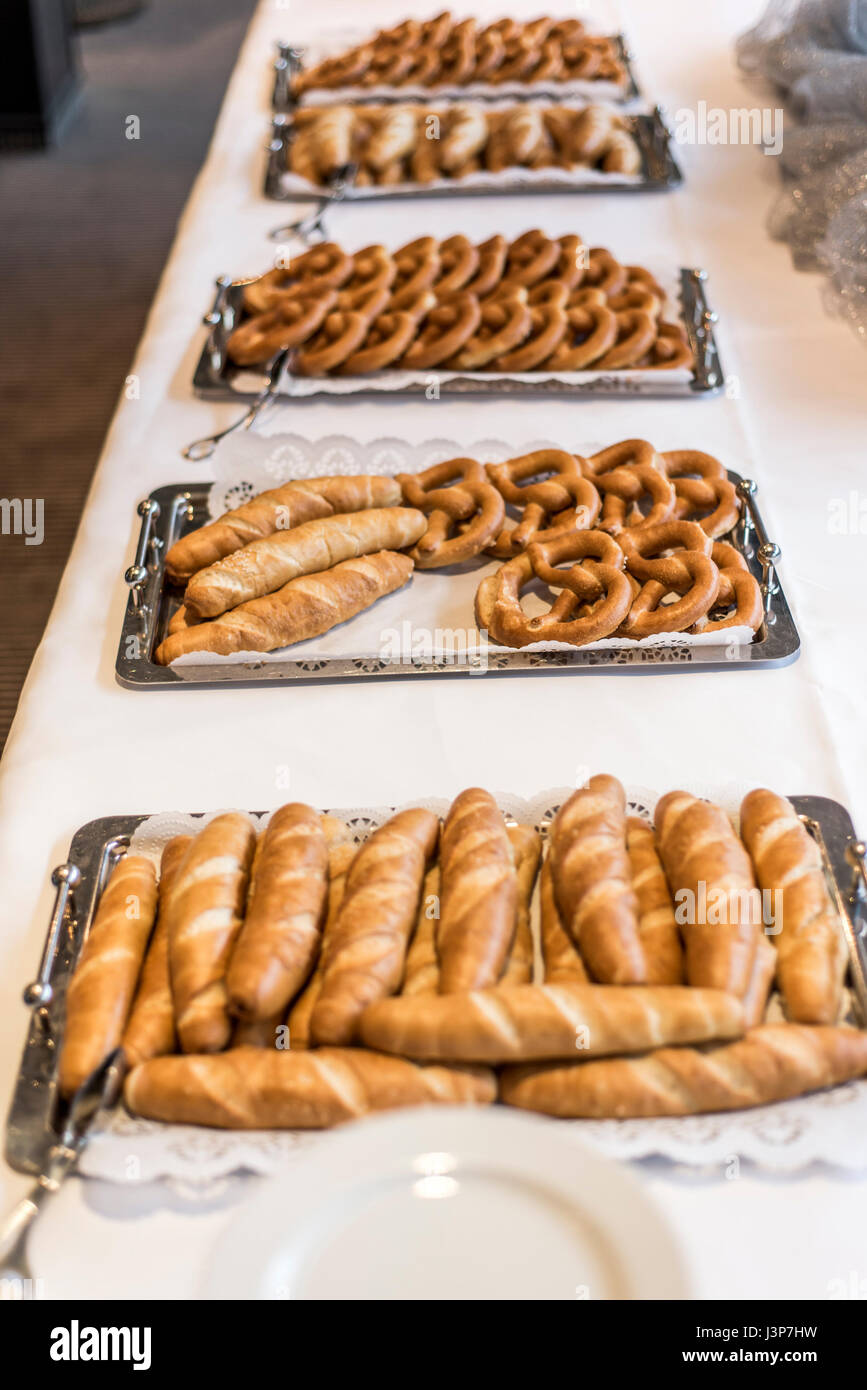Recognizing the Art of Bakeshop Products: From Freshly Baked Breads to Tempting Pastries and Finger Foods
From the science behind the perfect loaf of bread, where fermentation and gluten advancement play pivotal roles, to the finesse required for creating split pastries, each element discloses an engaging story of craftsmanship. The flexibility of finger foods shows how taste and appearance can be artfully combined to involve varied taste choices.
The Science of Bread Making
At the heart of every loaf of bread lies a remarkable interplay of chemistry and biology. The process of bread making starts with the mix of flour, yeast, water, and salt-- each ingredient playing an essential function in the last product.
Yeast, a living microorganism, ferments the sugars present in the flour, producing co2 and alcohol while doing so. The carbon dioxide gas produces bubbles in the dough, creating it to rise and create a light texture. The temperature level and humidity throughout fermentation considerably influence yeast task and, consequently, the bread's taste and texture.

Learning Bread Methods
How can one accomplish the delicate equilibrium of texture and taste that specifies remarkable bread? Grasping pastry strategies requires a deep understanding of active ingredients, approaches, and the scientific research behind them. Basic to this craft is the choice of high-quality active ingredients-- flour, butter, sugar, and eggs-- each playing a critical role in the last item's flavor and texture.
The method of lamination, which includes folding layers of dough and butter, creates the desired flakiness in pastries like croissants and smoke pastry. Precision in temperature is important, as butter needs to remain cool to ensure optimum layers. Proper blending approaches, such as the creaming method for cakes, make certain also incorporation of air and fat, resulting in a light and ventilated crumb.
Moreover, preserving the right humidity degrees during cooking can dramatically impact the end result, making sure that pastries increase correctly and attain that golden-brown surface. The art of bread additionally requires persistence and method; each attempt improves one's ability and understanding of the complex equilibrium needed to develop alluring pastries that delight the detects. Proficiency in these strategies inevitably differentiates a proficient pastry chef from an amateur.
Types of Finger Foods
The world of culinary thrills expands beyond breads to include a vast variety of finger foods, which are celebrated for their ease and convenience. These bite-sized treats are excellent for celebrations, supplying a selection of flavors and appearances that provide to diverse tastes buds.

On the sweeter side, bite-sized cupcakes and tiny tarts offer a delightful coating to any dish, interesting those with a sweet tooth. Additionally, cheese and charcuterie boards work as an advanced option, permitting visitors to personalize their bites with a selection of meats, fruits, nuts, and cheeses.
Flavor Profiles in Baking
Baking is a detailed dance of taste profiles that combines pleasant, savory, and umami notes to develop a harmonious experience for the palate. Recognizing these profiles is necessary for bakers looking for to elevate their productions.
Active ingredients such as delicious chocolate and caramel present complex wonderful notes that can either dominate or enhance other tastes. Ingredients like natural herbs, cheeses, and spices can transform a basic dough into a diverse taste experience.
Umami, often forgotten in baking, plays a substantial role in enhancing tastes. Ingredients such as aged cheeses, fermented items, or also specific nuts add to a tasty deepness that boosts overall taste.
In addition, the interplay of acidity from active ingredients like buttermilk or citrus zest can brighten tastes, supplying a refreshing counterpoint to sweetness. By attentively incorporating these flavor profiles, bakers can craft products that reverberate with varied palates, creating a remarkable cooking experience. Ultimately, grasping taste accounts is vital to development in the world of cooking.
Crucial Baking Tools and Ingredients
Comprehending taste accounts in cooking sets the stage for selecting the right devices and active ingredients that assist in the development of outstanding baked products. A dependable set of cooking pans-- such as sheet pans, loaf frying pans, and cake frying pans-- is important for achieving wanted textures and forms.
Flour offers as the backbone of the majority of recipes; picking the best kind-- be it bread, pastry, or all-purpose flour-- can considerably impact the result. Cooking powder and baking soft drink are important for producing lift in cakes and pastries.
In addition, web link incorporating flavor boosters like vanilla extract, flavors, and citrus zest can raise your productions. By guaranteeing accessibility to these fundamental tools and active ingredients, bakers can confidently begin on their cooking journey, crafting a his response varied array of wonderful baked items.
Final Thought
Proficiency in bread making, pastry prep work, and finger food discussion exposes the complex connections between ingredients and procedures. Bakery Catering Maddington. Exploring varied flavor profiles improves the baking experience, while necessary tools and ingredients give the structure for success.
How can one achieve the fragile balance of appearance and taste that defines exceptional bread? Essential to this craft is the option of high-grade components-- flour, butter, sugar, and eggs-- each playing an important role in the last product's taste and texture.

Comprehending taste accounts in cooking collections the phase for selecting the right devices and ingredients that help with the creation of outstanding baked goods. Exploring diverse taste accounts improves the baking experience, while essential tools and ingredients provide the foundation for success.
Comments on “Special Birthday Party Maddington Concepts for an Unforgettable Event”